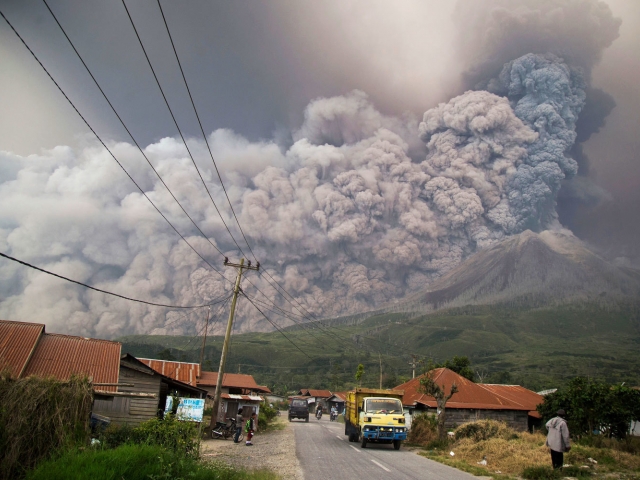
The 2,460-meter Sinabung volcano expelled five-kilometer-high ash column. The spokesman for the National Volcanology Agency declared this event the biggest eruption for Sinabung this year.
The Sinabung woke up in August 2010 after 400 years of inactivity.
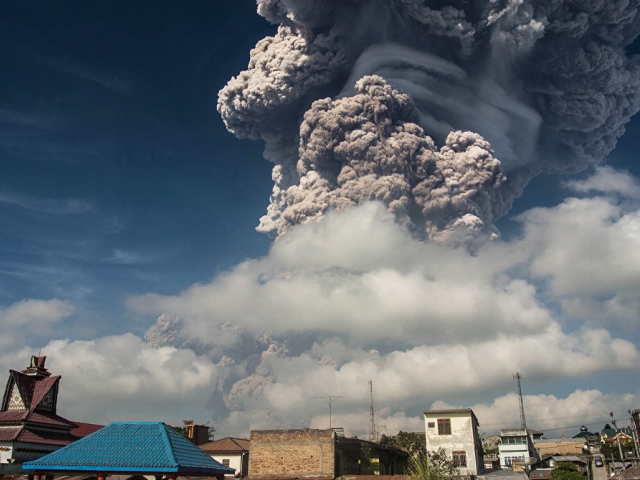
Despite the seeming lightness of the cloud, the ash mass is very high – it's thousands and tens of thousands of tons per day. These clouds moved up to 4.9 kilometers to the south and 3.5 kilometers to the east from the crater.
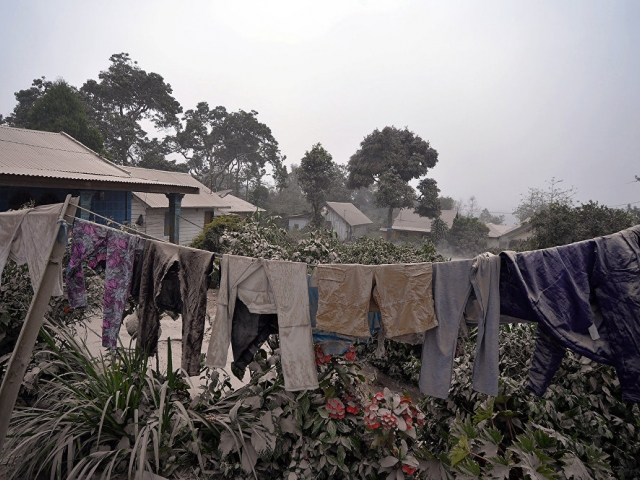
The emitted ash is considered more dangerous than lava because of the huge expulsion area: the solid particles of volcanic ash get into eyes and lungs of humans and pets and irritate these organs. Ashes also kill plants, and when it rains, the ground is covered with a dense crust, similar to concrete. Photo: Volcano ash covers neighborhood.

Despite the fact that the head of the National Disaster Management Agency declared the highest degree of danger and more than 3 thousand inhabitants left their homes, the eruption of the volcano did not affect the air traffic in the province of North Sumatra.
The National Agency of Volcanology noted that ashes did not reach the city of Medan and the airport.
The Australian Advisory Center for Volcanic Ash of Darwin in connection with the eruption announced a red alert level for aviation.
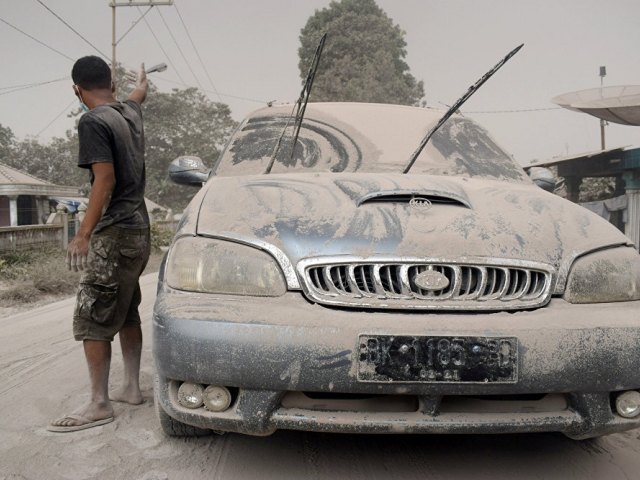
The Association of Tour Operators of Russia told that due to reports of the eruption the cost of permits to Indonesia fell sharply.
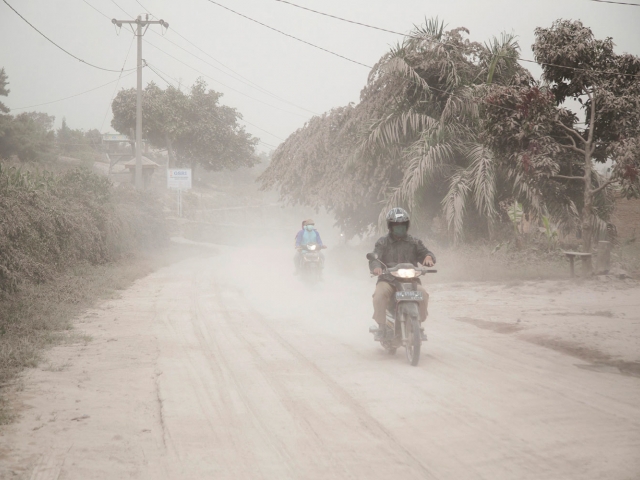
Indonesia is located on the edge of the "Ring of Fire" , a major area in the basin of the Pacific Ocean where a large number of earthquakes and volcanic eruptions occur. The plate, forming the bottom of the Indian Ocean, "squeezes" here under the Asian plate, which is part of Sumatra. Accumulating tension is released in the form of tremors of giant force that result in earthquakes and volcanic activity.
 বাংলা
বাংলা 
 Русский
Русский English
English Bahasa Indonesia
Bahasa Indonesia Bahasa Malay
Bahasa Malay ไทย
ไทย Español
Español Deutsch
Deutsch Български
Български Français
Français Tiếng Việt
Tiếng Việt 中文
中文 हिन्दी
हिन्दी Čeština
Čeština Українська
Українська Română
Română
